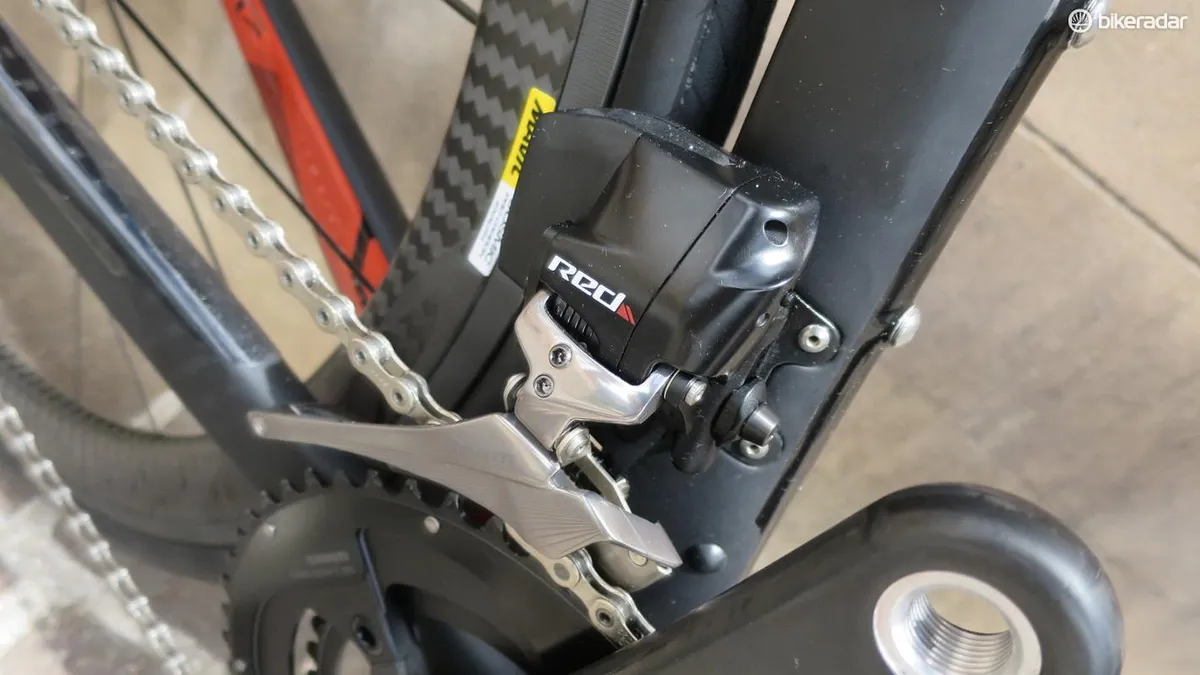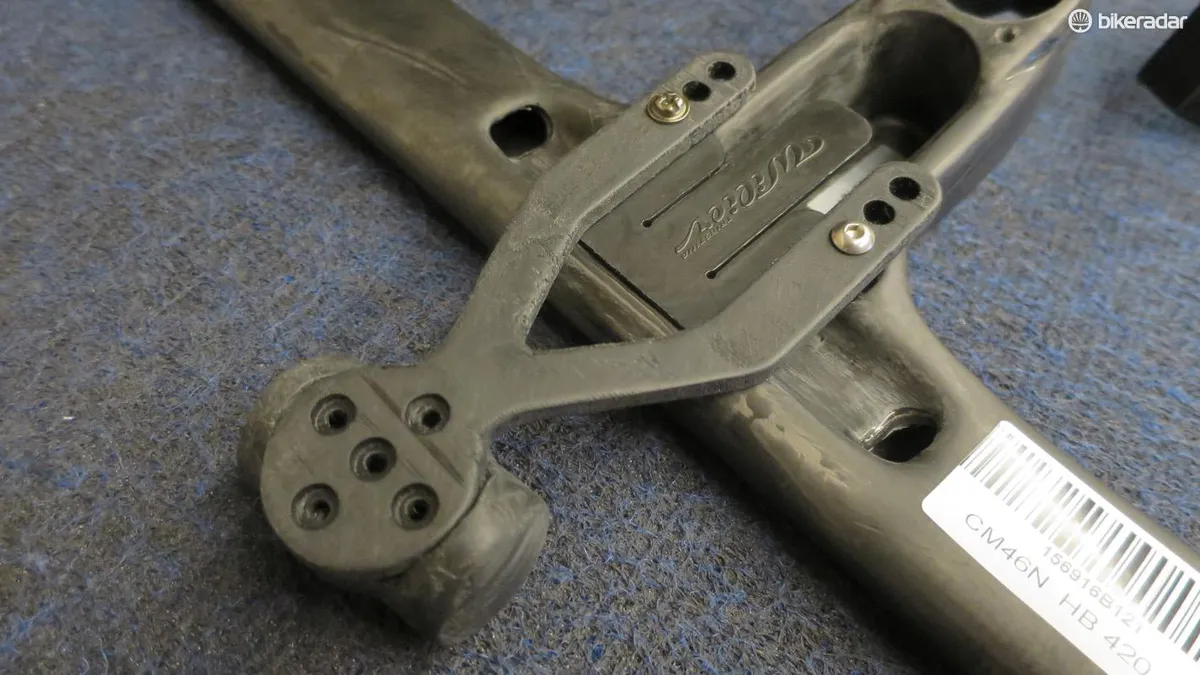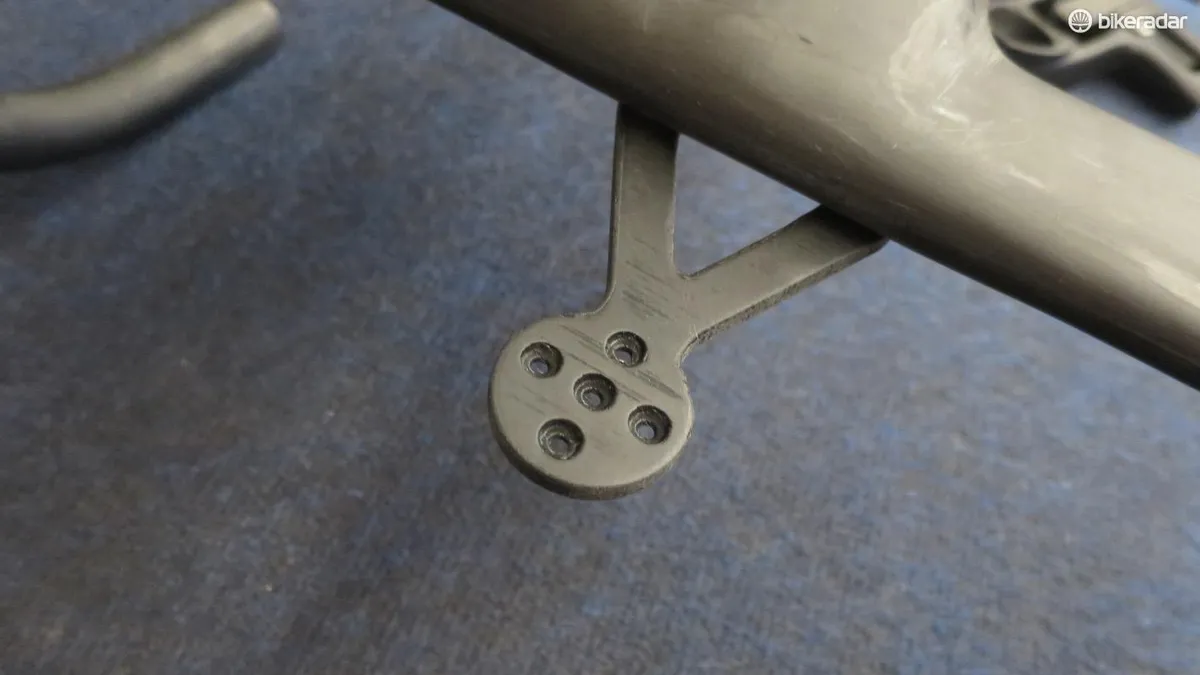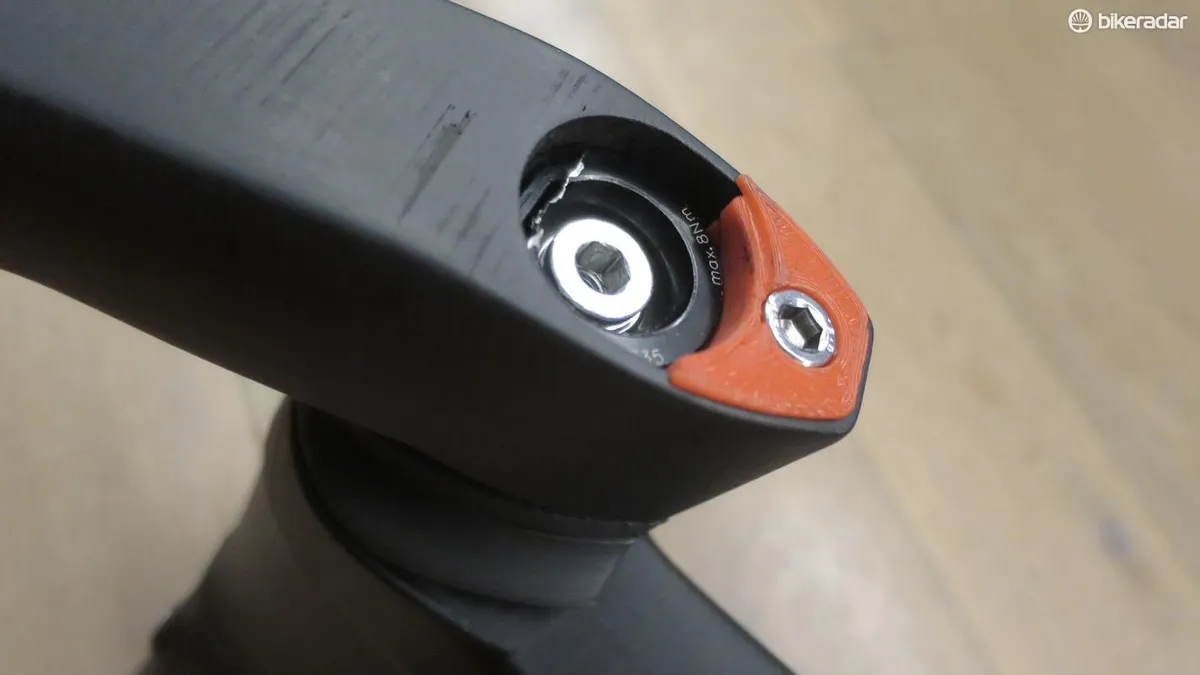Wilier has announced an all-new aero road bike, the Cento10 Air. The machine builds on the success of the CentoAir, with the Italian brand aiming to factor in the low weight of its Zero range and the comfort of its Cento1 SR, while improving aerodynamics over the existing Cento1 Air.
Wilier Cento10 Air highlights
- Brand-new one-piece Alabarda aero bar/stem combo
- Variable tube diameters to ensure different sizes retain ride feel
- Sub-kilo frame
- Innovative internal cable routing system
- Clearance for 28mm tyres
Nimble yet confortable
The frame's shaping is based around the SR's geometry: it’s suitably aggressive with a long, low riding position, and handling that’s designed to offer a fine balance between sharp steering and stability at speed. The back end is short to keep things nimble and the dropped seatstays are at the lowest point allowed by current UCI regulations, leaving plenty of room for the seat tube and post to offer a little flex for added smoothness.
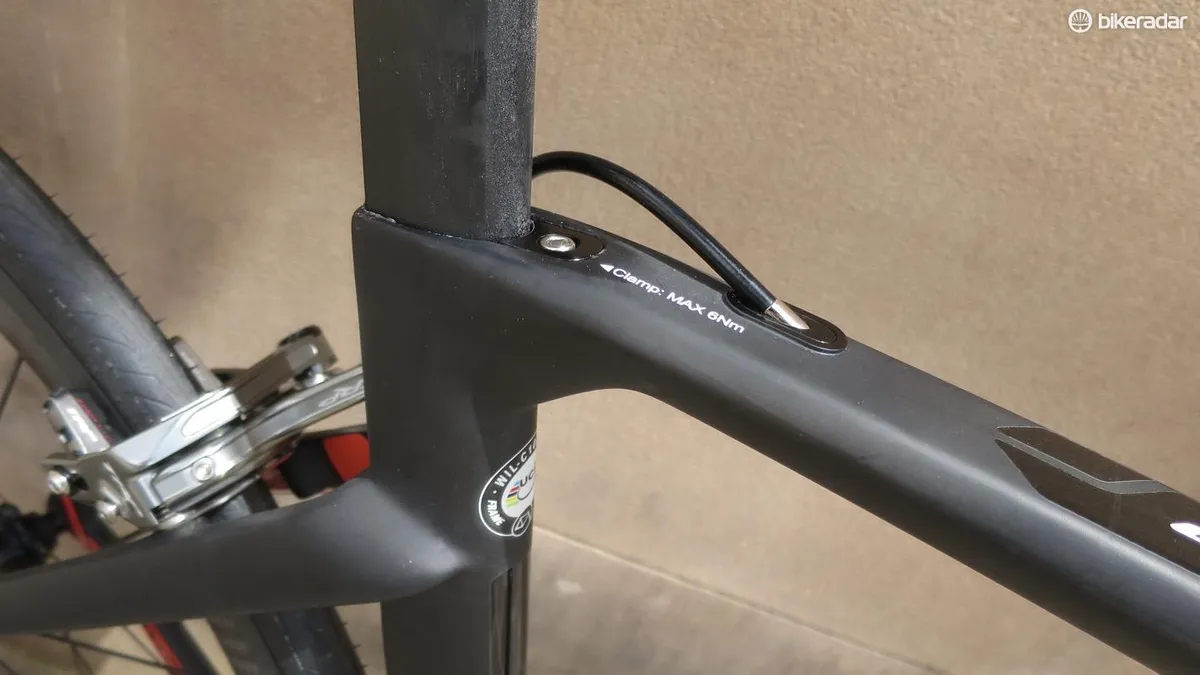
The frame weight has been kept to an impressive (for an aero bike) 990g. Wilier has achieved this by revising tube shapes and reducing overall diameters while modifying and improving the metal parts needed within the frame. Both frame and fork now use Shimano’s direct-mount brake standard, with Wilier claiming that by switching it's been able to reduce frame weight while increasing tyre clearances. The Cento10 Air can accept up to 28mm rubber.
Wilier has also taken steps to ensure that no matter which size Cento10 Air fits you, you’ll get the same ride character. This is something we’ve seen plenty of other brands choose to do, but on the 10 the tubing diameters vary considerably between sizes – for example, the down tube diameter on the XS model is 56.34mm, while on the XXL it grows to 67.53mm.
New integrated aerodynamic cockpit
One of Wilier's main goals with its aerodynamic refinements was a cleaner front end. That lead to designing a whole new one-piece integrated bar/stem with cables that route internally through it and into the head tube (sitting forward of the D-shaped steerer tube before passing either side).
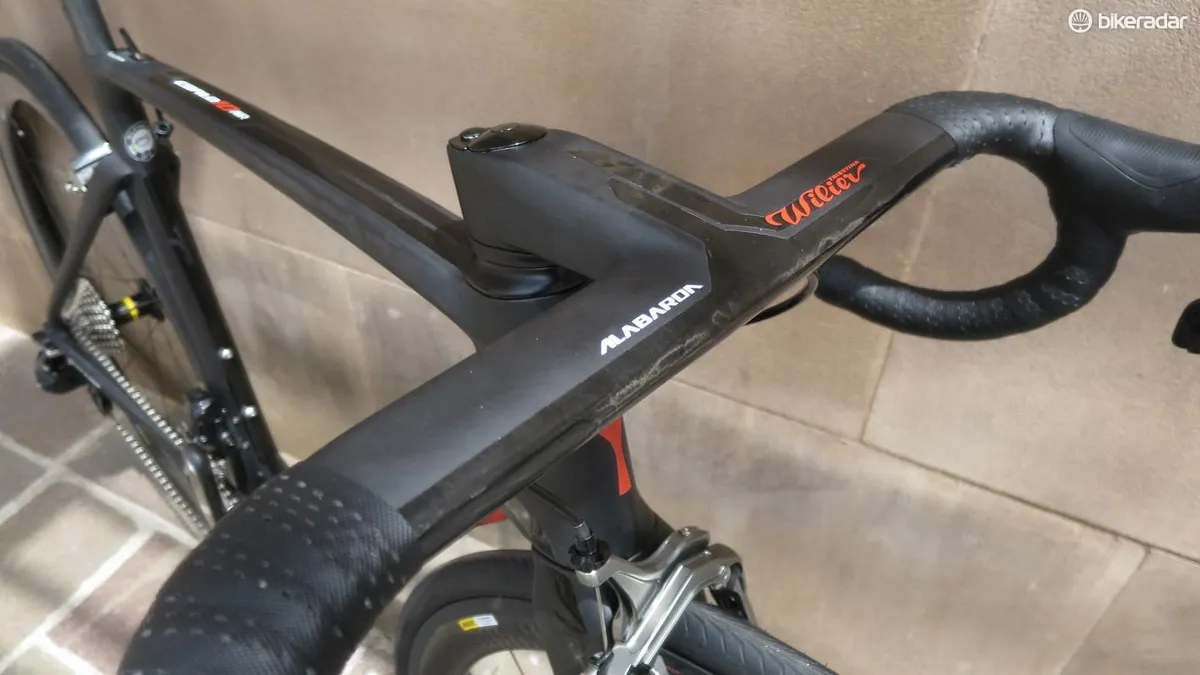
The new Alabarda bar/stem combo is designed with the stem sitting very low and inline with the completely horizontal bar, massively reducing frontal area. The stem has an angle of 10.3 degrees, compared with a standard 6-degree item, putting the bar position 1.8cm lower than a typical setup. To counter this, the bar sits on a special (aero-shaped) bearing top and a piece that sits under the stem (effectively raising it back to ‘normal’ height).
Included with the bar (and with complete bikes), which will also be available aftermarket, is a kit comprising of 2x 5mm spacers and 2x 10mm spacers offering plenty of adjustment to get the fit right. Because of the internal routing the spacers are split – which should save any extra faff when it comes to adjustment, because you won’t have to disconnect or re-route cables.
The underside of the stem is of hollow construction with a slot that’s sized to fit a Di2 control box. Bolted over this is a carbon leaf spring that acts as a retainer for the box, yet is still simple to pull out for charging or maintenance. The underside also features threaded inserts for an accessory forward mount for your head unit of choice, lights and so on.
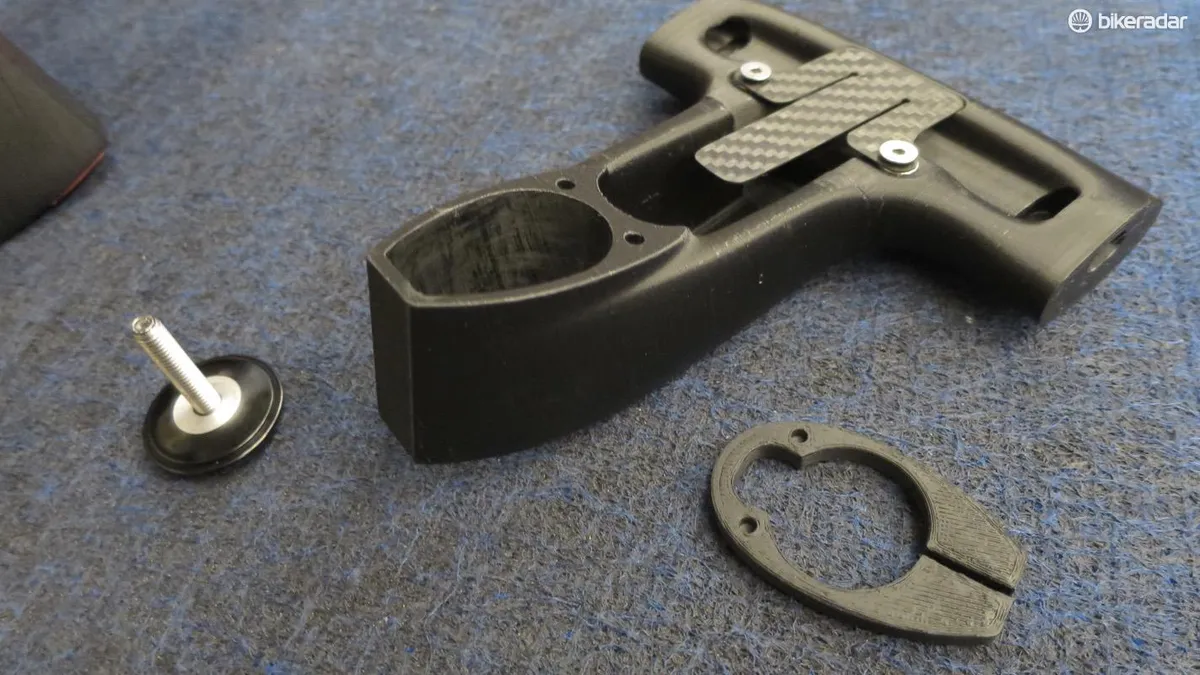
The clamping system on the stem is a pretty radical step, eschewing the traditional pinch-bolt clamp in favour of a three-piece wedge that sits behind the top cap (with a D-shaped expander underneath). The stem is clamped by torqueing up the wedge to provide a secure connection. We did have a couple of teething problems with getting the clamping right on our pre-production test bikes, but once set correctly it stayed put on some seriously hilly test rides in the Dolomites around Cortina.
The frame itself was developed with computational fluid dynamics (CFD) using various NACA airfoil profiles adapted to conform with UCI regulations with Kamm-tail shaping. The Kamm-tail cuts off the pointy end of an airfoil shape, effectively creating a ‘virtual’ airfoil; every tube on the Cento10 uses a Kamm-tail in one form or another. The seatpost for instance, developed with help from Ritchey is a blunted Kamm-tail shape with an all-new single bolt head, a 22mm offset and plenty fore-and-aft adjustment on the seat rails.
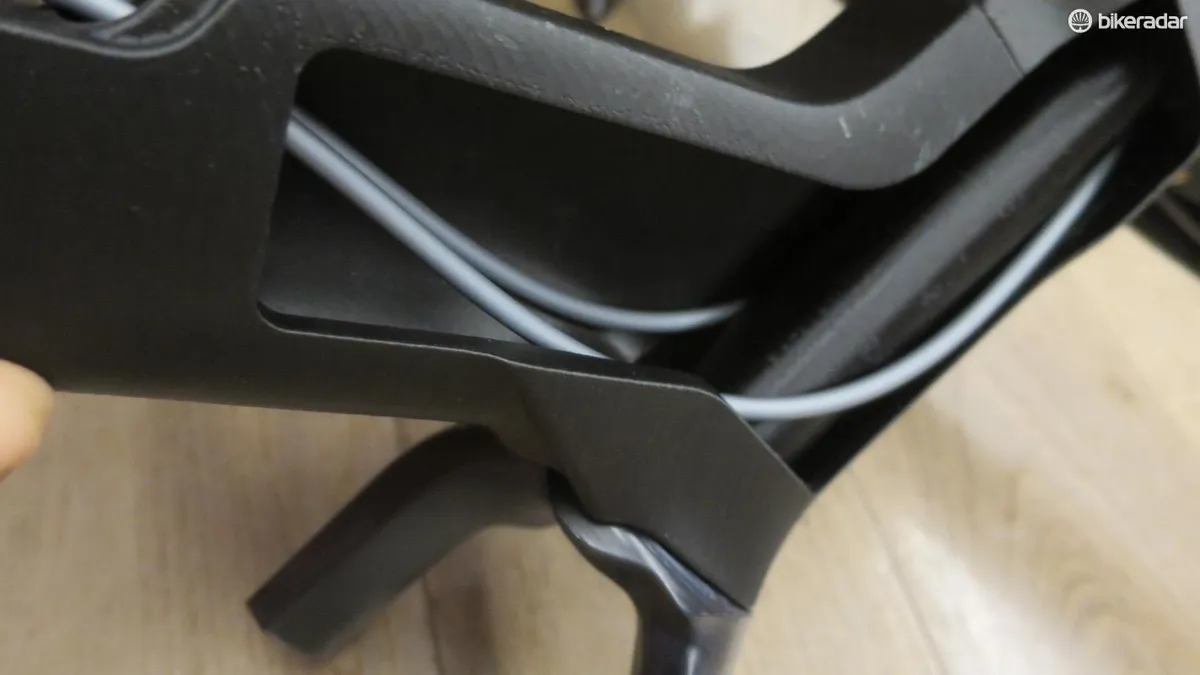
Inside, Wilier has done plenty of work on the cable routing to keep things running smooth and also help to keep the weight down. From the Alabarda unit, cables route down to an integrated plate that also acts as internal cable stops. On mechanical group equipped bikes it also incorporates an inline adjuster; on Di2 and eTap models it’s blanked out completely.
With the integrated cable stop in the down tube, the cables run parallel, only crossing under the BB en route to either front or rear derailleurs, and on different levels (heights) to prevent them fouling each other.
Pricing and range info
UK prices for the Cento10 Air are below – please note that in the wake of the vote to leave the EU, these may be subject to rises. We'll add international prices as we have them.
- Cento10 Air Chorus (carbon/red) – £4,599
- Cento10 Air Ultegra (white/carbon/orange) – £4,799
- Cento10 Air Ultegra Di2 (carbon/red) – £5,999
- Cento10 Air eTap (carbon/red) – £7,299

